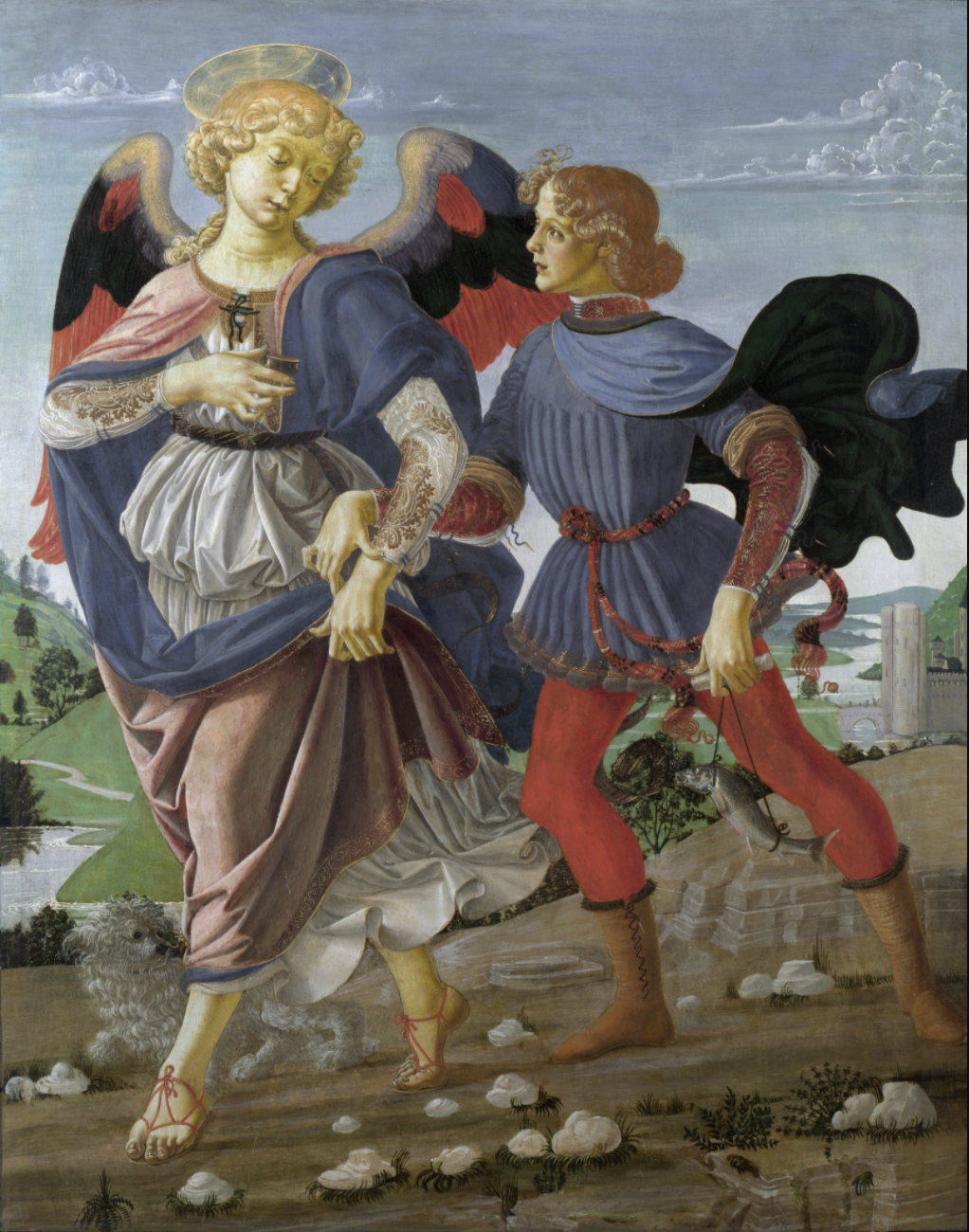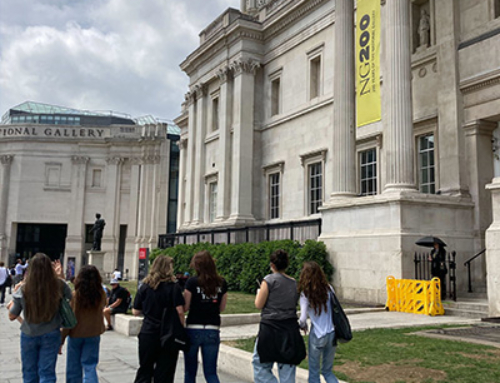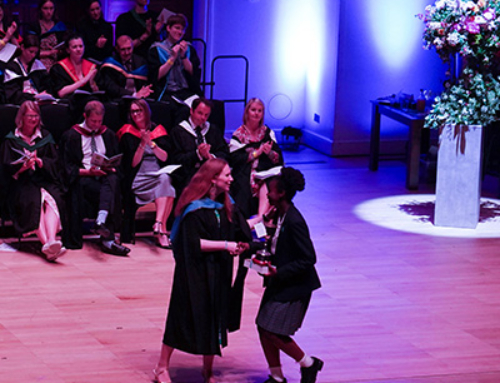This week, Ms Carr-Gomm discusses Andrea del Verrocchio’s Tobias and the Angel
I chose this painting as a sort of farewell to our lovely Upper VI Form Leavers and to give them very best wishes for whatever it is they choose to do in life.
 Workshop of Andrea del Verrocchio, Tobias and the Angel, c1475, tempera on wood, 83.6 x 66 cm, National Gallery London
Workshop of Andrea del Verrocchio, Tobias and the Angel, c1475, tempera on wood, 83.6 x 66 cm, National Gallery London
We see two elegant boys walking with some conviction along a pebbly road, arms linked in conversational and sartorial harmony. On the left the Archangel Raphael, with their rather ghostly little companion trotting beside him, leans towards Tobias who, looking up devotedly, is dangling a gaping scaly fish that he has just caught in the river Tigris, seen in the distance on the right. The story comes from The Book of Tobit and is really batty. Tobias’ father, Tobit, had deposited some money with a merchant and sent his son on a long journey to Media to retrieve it. En route, Raphael appeared to accompany our traveller; he holds a pot that contains the guts of the fish, and here he is explaining that they are an ointment that cures blindness. On reaching Media, Tobit collected his father’s debt and found that the merchant had a beautiful daughter, Sarah, whose previous seven husbands had died on their wedding night; in spite of this, Tobias married her, somewhat chancing fate. As luck would have it, the archangel instructed him to burn some of the fish gut and the demon that possessed Sarah was dispelled. When the happy couple returned home, Tobias discovered that his father had gone blind because one night he had slept outside and bird droppings had fallen into his eyes. Guess what the fish gut ointment, which must have stunk by now, was indeed the cure!
In the fifteenth century, the city of Florence, where this was painted, was a city of merchants and bankers and they prospered, trading with countries far afield. The Medici, as an example of one Florentine family, set up banks throughout Europe and dealt in goods as well; our pound sign, £, is that of the old Italian Lire. The textile industry was particularly profitable: they bought pigments for dyes from Afghanistan; wool came from Norfolk; and the Sultan of Egypt sent Lorenzo de Medici a giraffe to encourage trade. Merchants used to send their young sons out into the world to forge new businesses and prayed to the charming Archangel Raphael that they, like Tobias, returned with joy and success.
I hope every FHS leaver finds a guardian angel and their stories always have happy endings.














